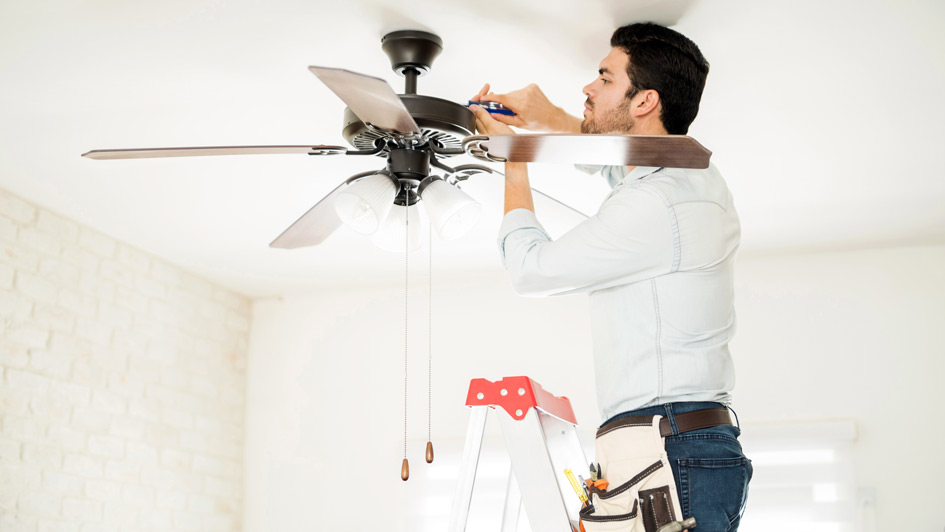
Ceiling fans are one of the most underrated ways to enhance comfort and lower energy costs. By boosting air circulation and assisting your HVAC system, ceiling fans and energy efficiency are truly a natural pairing. They offer a smart, energy-efficient way to stay cool while lessening strain on your AC—potentially sparing you from unnecessary air conditioning repair.
In this blog, the experts at Woody's Sudden Service break down how ceiling fans can make your home feel more comfortable while increasing your HVAC efficiency. We'll also provide some HVAC efficiency tips that make the most of ceiling fans.
Comfort vs. Temperature: The Effect of the Wind-Chill Effect Indoors
Ceiling fans don’t actually lower the room temperature—they make you feel cooler by moving air over your skin. This is known as the wind-chill effect, and it can make a room feel up to 4 degrees cooler without touching the thermostat. That means you feel less hot and enjoy the benefits of indoor air circulation from your ceiling fan while using less AC—helping reduce your electric bill in summer.
The Best of Both: Why You Should Use Fans and Air Conditioning Together
There are several advantages to using ceiling fans and air conditioning in tandem, especially on hotter days. By pairing both, you boost HVAC efficiency and keep your home cooler with less work from your cooling system.
Benefits of using ceiling fans and AC together:
- Ceiling fans help lower HVAC load by circulating cool air more evenly throughout a room. Reducing HVAC stress is important, because it can prevent a breakdown that could lead to premature AC or furnace installation.
- Using ceiling fans boosts the comfort level of your home by reducing uneven temperatures and increasing airflow.
- Combining ceiling fans and AC can reduce overall energy use. If you have a home automation system, you can even fine-tune your smart thermostat settings to increase the temperature slightly while your ceiling fan is running.
Clockwise vs. Counterclockwise Ceiling Fan Rotation: What Direction to Spin in Summer and Winter?
To maximize the benefits of your ceiling fans year-round, it’s important to ensure blades are rotating in the right direction for the season. The direction affects how air flows, which can either make you feel cooler or gently recirculate warm air so you feel warmer.
When it's best to spin ceiling fans counterclockwise
In the summer, ceiling fans should turn counterclockwise at a higher speed. This creates a breeze that pushes cool air downward, amplifying the wind-chill effect and making you feel cooler.
When to rotate ceiling fans clockwise
On cold days, set your fan to rotate clockwise on a low speed. This softly moves cold air up and draws warm air downward from the ceiling, making the space feel cozier without changing your thermostat.
How to Pick Out the Best Ceiling Fan for My Home
Picking the ideal ceiling fan depends on a few critical considerations, including blade design, airflow rating and room dimensions. First, look for fans that have a good blend of ECFM airflow and blade pitch to deliver efficient air circulation in your home:
- ECFM refers to how much air a fan circulates—the cubic feet per minute, or CFM—per watt of electricity consumed. Fans with higher ECFM are more energy efficient.
- Blade pitch refers to the incline of the blades. A steeper blade pitch moves more air than a shallower pitch but can also put extra load on the motor.
Also, consider room size when sizing a ceiling fan—a fan that’s too small won’t circulate sufficient air, while one that’s too large may be disruptive in a smaller room.
Raise Your HVAC Efficiency With the Experts from Woody's Sudden Service
At Woody's Sudden Service, our HVAC experts can help you stay comfortable while easing the burden on your heating and cooling systems. From practical fan advice and air conditioning installation to smart thermostats and furnace repair, we offer comprehensive solutions that fit your lifestyle. Schedule your appointment by calling 703-291-0095 today.
